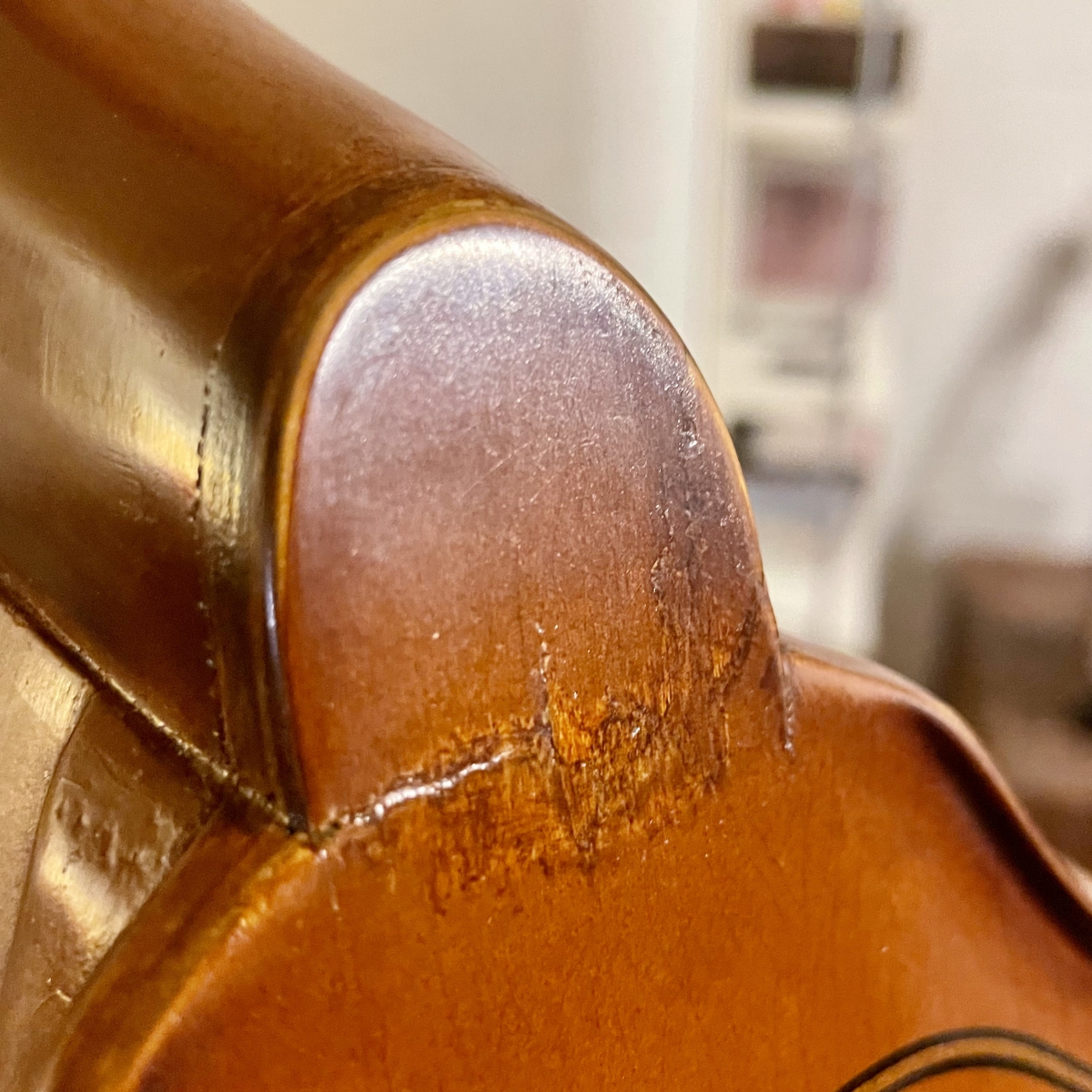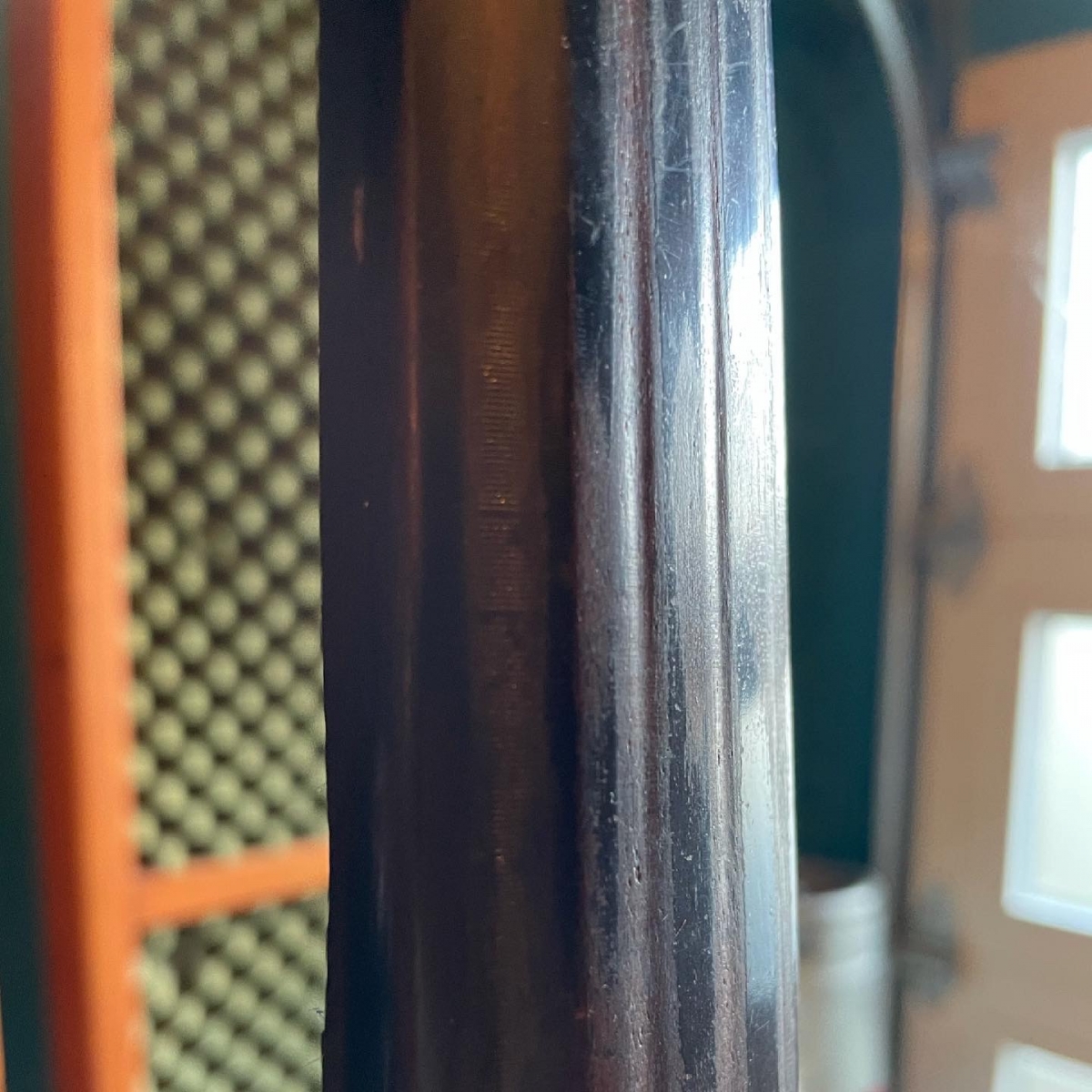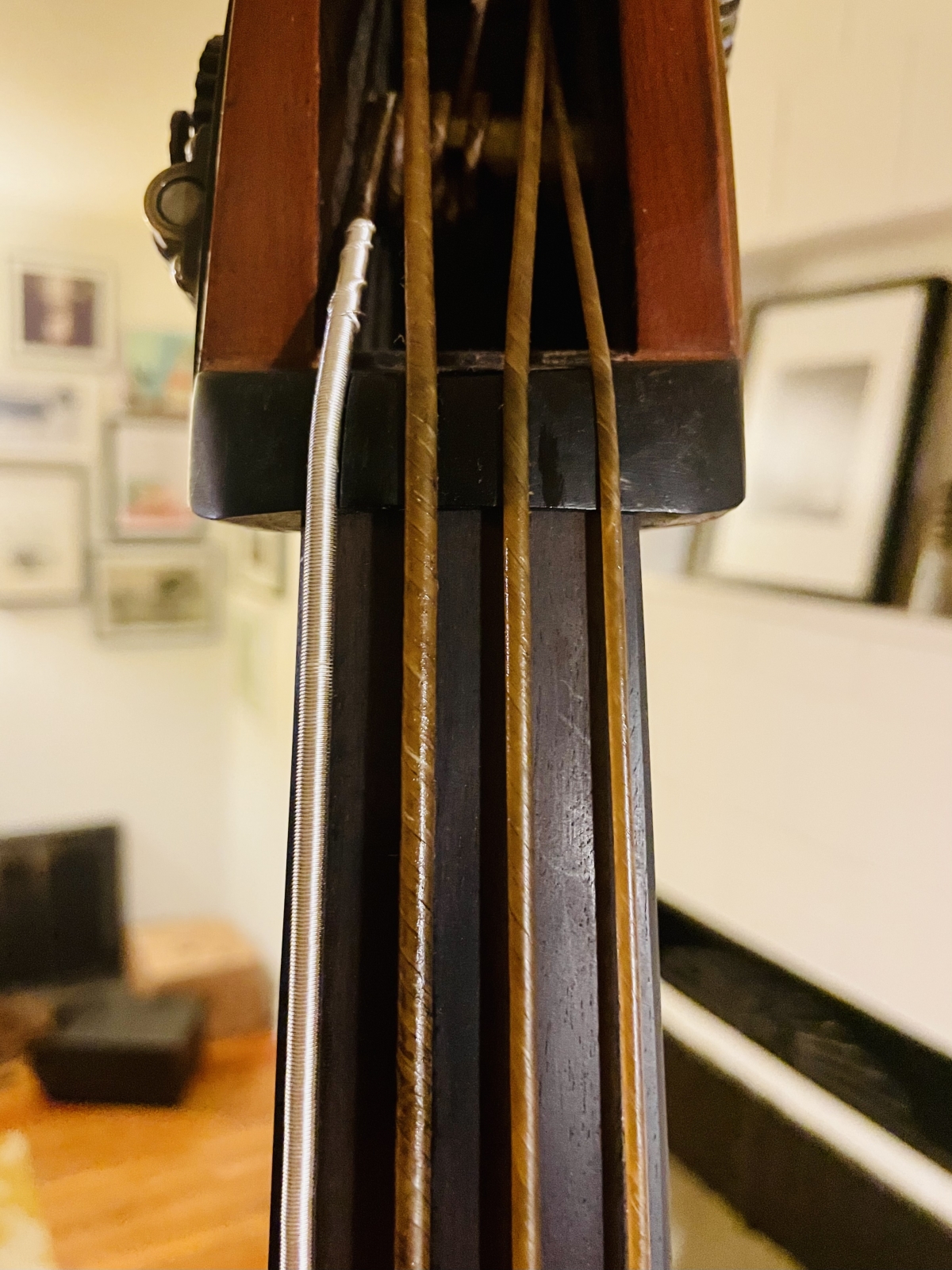
The new repair on the heel cap looks much better than the previous repair.
Repaired
When we last left our hero, we had a broken neck joint and a splintered heel cap. I’m happy to report the surgery was successful and the patient has fully recovered. Ah, but friends, there is even more to this adventure.
I’m fortunate enough to know several very skilled luthiers. One of them in particular is a well-respected violin maker, and also happens to play in a band with me. Given his extensive experience with the violin family of instruments, and the fact that he has somewhat of a vested interest in me having a working instrument, I figured Gary Vessel was the best choice for this repair.
With a little bass chiropractoring, he was quickly able to diagnose it as a simple cracked glue joint. Easy peasy. I play my Fender bass on a good number of Bottom Dwellers tunes these days, and my buddy Matt was more than generous to loan me his Kay (which is set up just the way I like it, with medium action and gut strings). Getting by without my number one wouldn’t be too difficult.
A few days after dropping it off at the shop, I got a call from Gary saying that the fingerboard had come off when he was removing the neck. This wasn’t a big deal. It would just take a little extra time to glue it back on; however, this presented me with a unique opportunity.
When I bought the bass twelve years ago, I compromised on one of my wishlist items: an ebony fingerboard. My previous bass had a painted maple fingerboard. I hated it. With all the slapping I do, little flecks of paint would come off and work their way under my fingernails. It made me feel gross when meeting people and shaking hands after shows. It looked like I never washed my hands.
This bass was even worse in the fingerboard department. It was made of an even softer wood (just wait!), which got pretty chewed up when I switched to a wound gut E string many years back. I had also warn in a few groves which caused some significant buzzing in first position on the second and third strings. This was my big chance.

I knew it was bad, but I had no idea the grooves warn into the old fingerboard were this bad.
I asked Gary if he was up for replacing the fingerboard with an ebony one. After I let him hem and haw about the huge amount of time and money the repair would involve, he finally caved. It didn’t actually go down like that. He was extremely professional, and made sure I knew that this was a pretty expensive job. I had always intended to replace the fingerboard on this bass, and had a pretty clear understanding of what to expect.
This managing of expectations part of the process is actually a pretty important step and worth talking about. We are dealing with a factory-built, plywood instrument from 1969 here. It’s probably valued at $5,000 at most (double basses are really expensive). A repair/modification of this significance on an instrument of this quality is on the borderline of actually being worth it. I don’t want to disclose what Gary charged, as I suspect he gave me a bit of an insider discount, but it was a significant fraction of the value of this instrument.
When considering this kind of work, it’s important to take into account the personal value of the instrument to you—sentimental value, how well it suits your needs, etc.
In my case, this instrument is my number one. It gets a lot of use. I gig two to four times per month with it, and have regular rehearsals every week. I play it almost exclusively outdoors, so it sees a lot of weather. While I would love to have a $10k to $20k carved bass, it simply wouldn’t be practical for me to gig the way I do with something that nice. This is why a fingerboard replacement makes sense for me.
It’s quite an ask for a luthier to carve a new ebony fingerboard for you. Ebony is extremely hard, and double bass fingerboards are extremely large. It’s a lot of physically demanding work.

I also put on new E and G strings.
Two months later, I’m back in action, and I couldn’t be happier. The fingerboard is flawless. The bass plays like a dream. It has better sustain, and the new fingerboard is slightly thicker, which increased the neck angle a bit. This has the benefit of extending the strings a bit further from the top which makes the instrument louder.
I played the bass at the Lost River Bluegrass Festival in Merrill, OR over the weekend. There was no buzzing, and no black paint under my fingernails afterwards!
Speaking of buzzing and black paint, I really need to take a minute to talk about the old fingerboard. I knew the fingerboard was soft, but I have to say I was pretty surprised to learn it was actually mahogany! I know that mahogany can vary a bit in hardness, but it is hardly an appropriate material for a fingerboard. It’s used for guitar tops for fuck’s sake! I can’t believe I put up with it for so long. The old fingerboard will live on in infamy on the trophy wall in my shop.
This investment was very worthwhile to me. It is a complete game changer. The bass sounds and plays 1,000 times better, but somehow feels exactly the same.